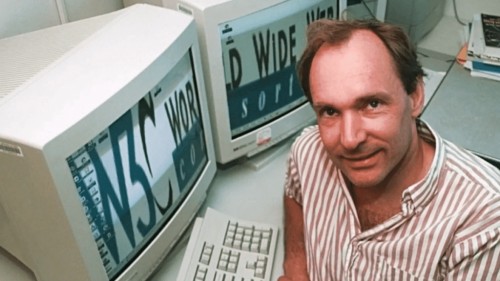The brain that built the internet without patents: Tim Berners Lee
Today, it is increasingly impossible for an individual to develop an invention that will truly change the world. But British physicist and computer scientist Tim Berners Lee did it in 1990 and invented the www.

Timothy Berners-Lee was born in London. Both of his parents were computer engineers. As a child, Tim built circuits that control model train sets, and later became interested in electronics. He studied physics at Oxford University. He built his first computer while he was a student. After graduating from school in 1976, he worked as a computer systems engineer in various companies.
Sir Timothy John Berners-Lee (born 8 June 1955), also known as TimBL, is an English computer scientist best known as the inventor of the World Wide Web. He is a Professorial Fellow of Computer Science at the University of Oxford and a professor at the Massachusetts Institute of Technology (MIT).
Tim Berners-Lee, who invented the www while working at CERN in Geneva in 1989, founded the World Wide Web Consortium (W3C), an organization that sets standards for the network and strives to implement them.
In 1980, Berners-Lee worked for 6 months at the European Center for Nuclear Research, located near Geneva, on the France-Swiss border and conducting research on particle physics. This organization is more commonly known as CERN, which is an abbreviation of its original name, Counseil Europeen pour la Recherche Nucleaire. While at CERN, Berners-Lee developed a computer system for personal use to store and reuse information.
The invention, which can be considered the pioneer of the Internet, was called ENQUIRE. ENQUIRE was based on a system of top links that took a computer to another related document with cross-references within the document.
In 1984 Berners-Lee returned to CERN. Here he was frustrated by the incompatibility between documents created with different computer systems and different applications. In a short note to his manager in 1989, Berners-Lee summarized his views on a "universal connected information system" that would organize the information produced at CERN on a large scale. He predicted that a structure designed in the form of a "network of connections" would be much more useful than the existing "fixed, hierarchical system". According to him, documents located on computers within the CERN network would have superlinks to other documents, including other computers. In 1990, Berners-Lee's manager gave his support to develop these ideas as a side project.
Together with his colleague, Belgian computer engineer Robert Cailliau (b. 1947), he created the basic elements of the World Wide Web, which are now widely known. The universal language he created for the software of linked documents known as "web pages" became commonplace with the abbreviation "html"/rich markup language. This software, called a web server, responds to "requests" from uplinks. This term is also used for the hardware on which the web pages are located. The language or protocol that computers use to communicate with uplink requests is "http" (hypertext transfer protocol). Berners-Lee also wrote the first web browser, the application for viewing documents held on web servers, calling it the "World Wide Web". Berners-Lee also wrote and published the first web pages on his server in December 1990. He then did the first internet "surfing" from one web page to another via http by clicking a top link in his browser.
A year later, Berners-Lee opened the software he developed outside of CERN, and his ideas were quickly accepted. By 1994, the Network had become so pervasive that a single "address" on the Internet was required for each "resource" (for example, a document or an image). In consultation with the networking community, Berners-Lee created a format for network addresses: URL (An example Resource Locator). After 1994, the Network spread rapidly outside of academic and military circles. Within a few years, many people all over the world were directly under the influence of the Network, with millions already beginning regular "surfing" from one document to another.
Tim Berners-Lee was showered with praise for presenting his invention to the world without seeking any patent rights. In 1994, he founded the World Wide Web Consortium. The purpose of the consortium was to continue the operation of the Network without interruption and to assist its future development. Berners-Lee also campaigned for the internet to remain "neutral", that is, any computer can be connected and content is not restricted.
